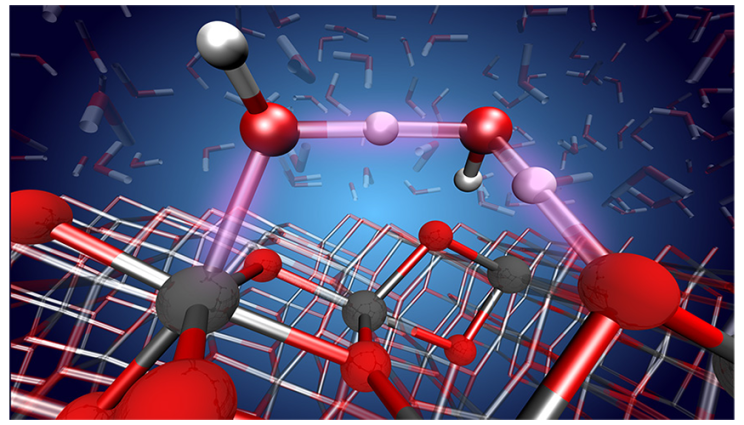Fueling up hydrogen production
Through machine learning, an LLNL scientist has a better grasp of understanding materials used to produce hydrogen fuel. The interaction of water with TiO2 (titanium oxide) surfaces is especially important in various scientific fields and applications, from photocatalysis for hydrogen production to photooxidation of organic pollutants to self-cleaning surfaces and biomedical devices. However, the surface chemistry of TiO2 in contact with water has been the subject of several debates among scientists. The challenge is: If one really wants to understand how water is converted to H2 and O2 by TiO2, one must first understand the chemistry of the region where this reaction takes place. In a paper appearing in the Proceedings of the National Academy of Sciences, LLNL researchers used molecular simulations that accurately reproduce the ab initio results for water interacting with a prototypical TiO2(110) surface. The results have implications for improved production of hydrogen fuel. “Our fundamental understanding of the TiO2 interface with water will help us to find more efficient and affordable materials to produce hydrogen in a clean and renewable fashion,” said Marcos Calegari Andrade, materials scientist in the Quantum Simulations Group and co-author of the paper. The work highlights how powerful machine learning is to study chemical reactions at solid-liquid interfaces (such as the TiO2-water interface). Machine learning allows for long and large-scale atomistic simulations with the accuracy of quantum mechanics but at orders of magnitude lower computational costs. Read more at LLNL News.







